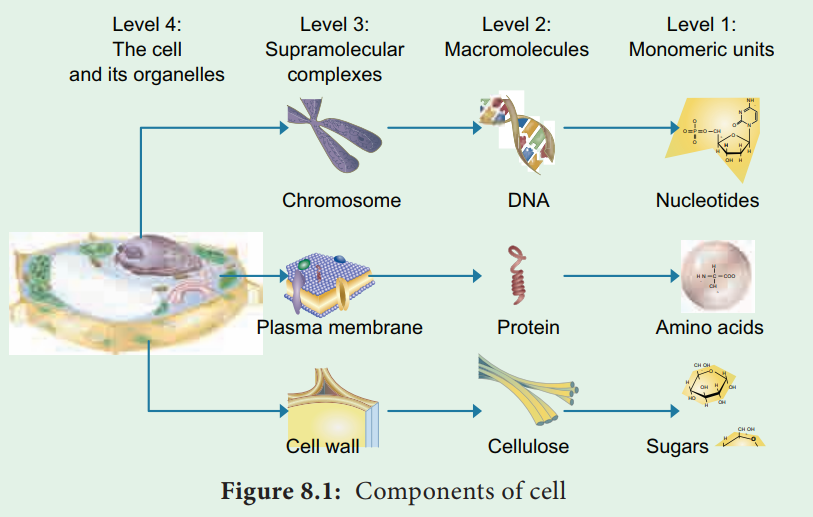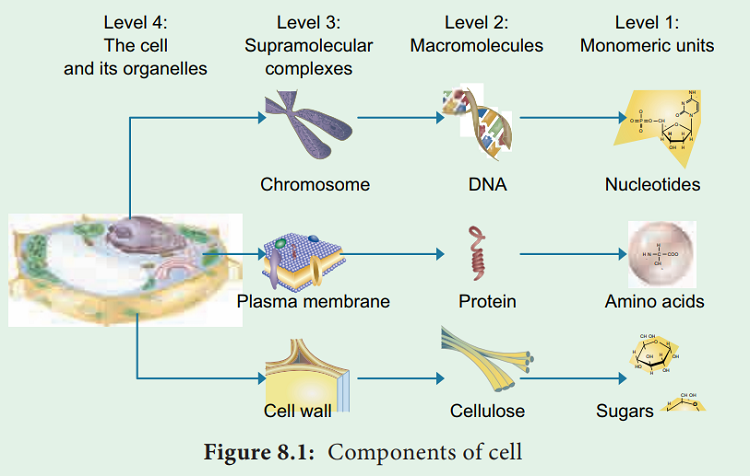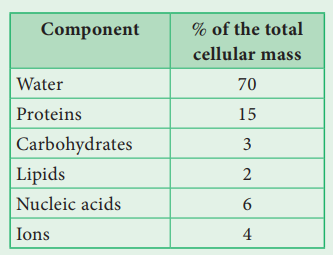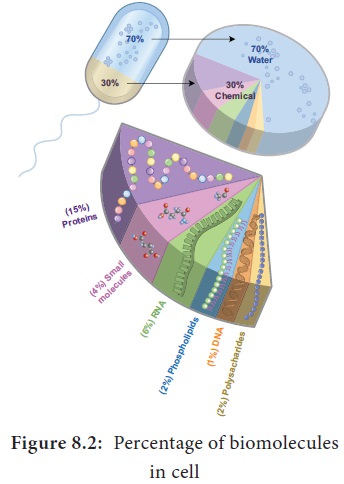Chapter: 11th Botany : Chapter 8 : Biomolecules
Organic compounds: Biomolecules

Biomolecules
Organic compounds: Biomolecules
Having learnt the structure of the cell, we can now
understand that each component of the cell is responsible for a specific
function. The cell components are made of collection of molecules called as cellular pool, which consists of both
inorganic and organic compounds. Inorganic compounds include salts, mineral
ions and water.

Organic compounds are carbohydrates, lipids, amino
acids, proteins, nucleotides, hormones and vitamins. Some organic molecules
remain in colloidal form in the aqueous intracellular fluid. Others exist in
non-aqueous phases like the lipid mem-brane and cell walls. The cell maintains
this pool by the intake and elimination of spe-cific molecules (Figure 8.1).
The minerals essential for plant growth are of two
types: macronutrients, which are
required in larger amounts (Eg. Potassium, phosphorus, calcium, magnesium,
sulphur and iron) and micronutrients,
which are required in trace amounts
(Eg. Cobalt, zinc, boron, copper, molybdenum and manganese) and are essential
for enzyme action. Example, Manganese is required for activity of enzyme needed
for synthesis of oligosaccharides and glycoproteins. Molybdenum is necessary
for fixation of nitrogen by enzyme nitrogenase.


Related Topics